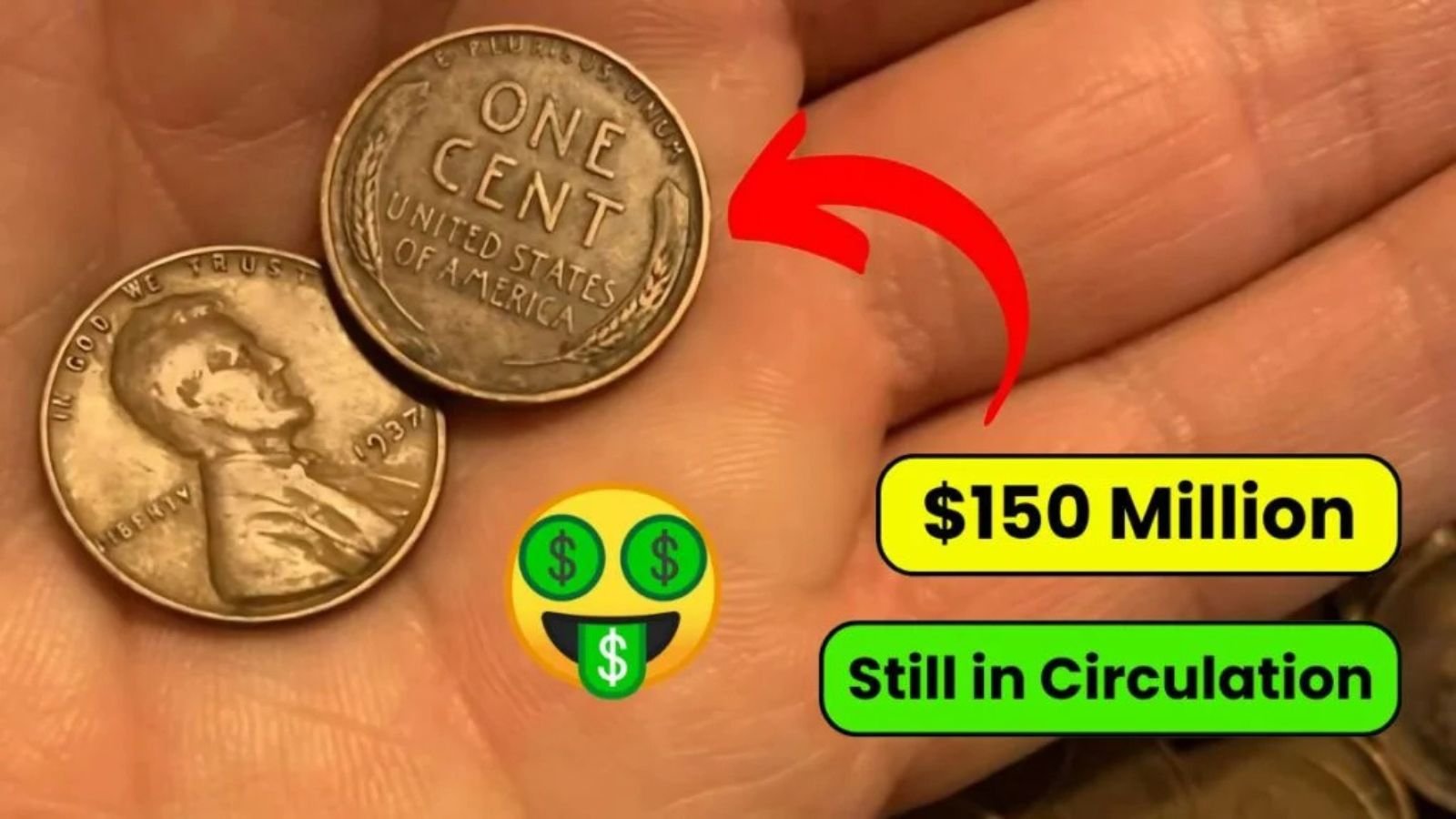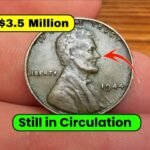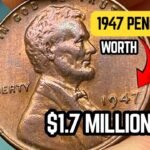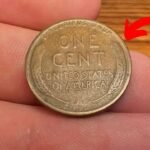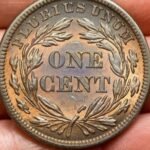Sometimes, it’s the smallest things in life that turn out to be the most valuable. That sentiment couldn’t be more true in the world of coin collecting, especially when it comes to a little copper coin known as the Lincoln Wheat Penny. For decades, this modest penny found its way into the pockets, piggy banks, and coin jars of millions of Americans. Today, however, certain rare versions of the Lincoln Wheat Penny are worth more than anyone could’ve imagined—some selling for thousands, even hundreds of thousands of dollars.
If you’ve ever sifted through old jars of spare change or inherited coins from a grandparent, you might want to give those pennies another look. That seemingly insignificant coin might just be a Lincoln Wheat Penny—and if it’s one of the rare ones, it could turn out to be your lucky day. This guide will walk you through everything you need to know about the Lincoln Wheat Penny: its history, why it’s so valuable, which specific versions to keep an eye out for, and how to determine if you’re holding onto a hidden treasure.
A Brief History of the Lincoln Wheat Penny
The Lincoln Wheat Penny made its debut in 1909, introduced to commemorate the 100th anniversary of President Abraham Lincoln’s birth. It was the first U.S. coin to ever feature a real person’s portrait rather than the usual allegorical figures like Lady Liberty. Victor David Brenner, a renowned sculptor and designer, created the now-iconic profile of Lincoln, which still appears on modern pennies today.
What made the Lincoln Wheat Penny distinct during its production years was the design on the reverse side—two stalks of wheat flanking the denomination and inscription “ONE CENT.” These wheat stalks symbolized prosperity and agricultural strength, a nod to America’s agrarian roots.
The U.S. Mint produced the Lincoln Wheat Penny from 1909 until 1958. In 1959, the wheat design was replaced by the Lincoln Memorial. However, those 49 years of minting left behind countless Lincoln Wheat Pennies, and while most are worth face value, some rare and special editions are now worth a fortune.
Rare and Valuable Lincoln Wheat Pennies to Watch For
Though many Lincoln Wheat Pennies are common and not particularly valuable, a select few editions stand out for their rarity and historical significance. Here are some of the most valuable examples that collectors dream of finding:
1. 1909-S VDB Lincoln Wheat Penny
This coin is arguably the most legendary Lincoln Wheat Penny ever minted. It was the first year the coin was issued, and Victor David Brenner included his initials, “VDB,” prominently on the reverse. However, some people at the time felt the initials were too large and inappropriate for a coin, so the U.S. Mint quickly removed them. But before that happened, around 484,000 of the 1909-S VDB Lincoln Wheat Pennies were already released into circulation.
Because of its low mintage and historical significance, this coin is highly sought after. Depending on its condition, it can sell for anywhere from $700 to over $100,000.
2. 1943 Copper Lincoln Wheat Penny
In 1943, due to a wartime shortage of copper during World War II, the U.S. Mint began producing pennies from steel coated with zinc. However, a small number of 1943 Lincoln Wheat Pennies were mistakenly struck using leftover copper planchets.
Only about 20 to 40 of these rare copper versions are known to exist today. If you happen to find a 1943 Lincoln Wheat Penny and it doesn’t stick to a magnet, you might be holding one of the rarest coins in American history. These copper 1943 pennies have been known to sell for anywhere between $100,000 and $1 million depending on their condition.
3. 1922 No D Lincoln Wheat Penny
In 1922, all pennies were struck at the Denver Mint, which usually adds a small “D” mintmark beneath the year. However, due to a die malfunction, some coins were released without the mintmark, leading to the rare “No D” variety.
Because Philadelphia didn’t mint any pennies that year, the absence of a mintmark on a 1922 Lincoln Wheat Penny makes it an extremely rare find. Well-preserved examples have sold for several thousand dollars at auction.
4. 1955 Doubled Die Lincoln Wheat Penny
This coin is famous for its noticeable doubling of the text and date on the obverse side. If you find a Lincoln Wheat Penny from 1955 where the inscriptions “LIBERTY” and “IN GOD WE TRUST” look slightly blurry or appear to have a shadow effect, you might have a doubled die error on your hands.
This highly collectible error occurred when the coin die was misaligned during production. Depending on the grade, these coins have been known to sell for anywhere from $1,000 to $50,000.
Why Is the Lincoln Wheat Penny Gaining So Much Popularity?
Over the past few years, there’s been a major resurgence in vintage coin collecting. The reasons for this renewed interest are varied. First, platforms like YouTube, TikTok, and eBay have helped collectors and dealers educate the public and reach wider audiences. A simple video or listing about a rare Lincoln Wheat Penny going for tens of thousands of dollars can spark curiosity in millions.
Second, in times of economic instability, tangible assets like precious metals and collectible coins often gain attention. People seek items that have historical and intrinsic value, and coins like the Lincoln Wheat Penny check both boxes.
Lastly, many collectors appreciate the Lincoln Wheat Penny for its accessibility. You don’t have to be a millionaire to get into collecting them. People often find these pennies tucked away in old coin jars, inherited collections, or even from pocket change if they’re lucky.
How to Identify and Evaluate a Lincoln Wheat Penny
Not all Lincoln Wheat Pennies are valuable, but a few simple checks can help you determine whether your coin is worth keeping—or even grading and selling.
1. Check the Date and Mintmark
The date is crucial. Look for key years like 1909, 1922, 1943, and 1955. Then, check the mintmark—usually found just below the date. Coins with “S” (San Francisco) or “D” (Denver) mintmarks are generally more scarce and can be more valuable than those from Philadelphia, which often lacks a mintmark.
2. Inspect for Errors or Anomalies
Collectors love error coins. Look for signs of doubling, missing letters, incorrect spacing, or even coins made from the wrong material. If you suspect something unusual, it’s a good idea to consult a professional or reference a numismatic guide.
3. Assess the Condition
Condition is everything in the world of coin collecting. A rare Lincoln Wheat Penny in poor condition won’t fetch as much as a common one in mint condition. Terms like “Good,” “Fine,” “Very Fine,” and “Mint State” are used to describe a coin’s quality. To get an official grade, you can submit your coin to professional grading services like PCGS (Professional Coin Grading Service) or NGC (Numismatic Guaranty Corporation).
Where to Sell a Rare Lincoln Wheat Penny
If you’ve confirmed that you own a valuable Lincoln Wheat Penny, the next step is deciding how to sell it. Here are some trusted avenues:
- Online Marketplaces: eBay and other auction websites are popular, but be prepared to handle fees and understand how to list the coin properly to get the best return.
- Specialized Auction Houses: Heritage Auctions, Stack’s Bowers, and GreatCollections cater specifically to rare coin collectors and often fetch higher prices.
- Local Coin Shops: A good starting point if you’re new to coin collecting. Reputable dealers can provide you with a rough estimate and advice.
- Coin Shows: These events allow you to interact with experts, meet other collectors, and sell directly to interested buyers.
- Professional Grading Services: Getting your coin graded and authenticated can significantly increase its value and make it more appealing to buyers.
Final Thoughts: Don’t Underestimate the Lincoln Wheat Penny
At the end of the day, the Lincoln Wheat Penny isn’t just an old coin—it’s a tangible piece of American history that could be worth far more than its face value. While most of these coins are still only worth a penny, there are a few rare and exceptional examples that have changed lives.
If you enjoy the thrill of discovery, there’s no harm in taking a closer look at those old coins you’ve tucked away. You never know—your next lucky find could be hiding in plain sight. With the right knowledge, a little patience, and a keen eye, the Lincoln Wheat Penny might just become your gateway to a fascinating hobby—or a surprising windfall.
Some Important Link
| Telegram Group | Click Here |
| WhatsApp Group | Click Here |
| Home Page | Click Here |
